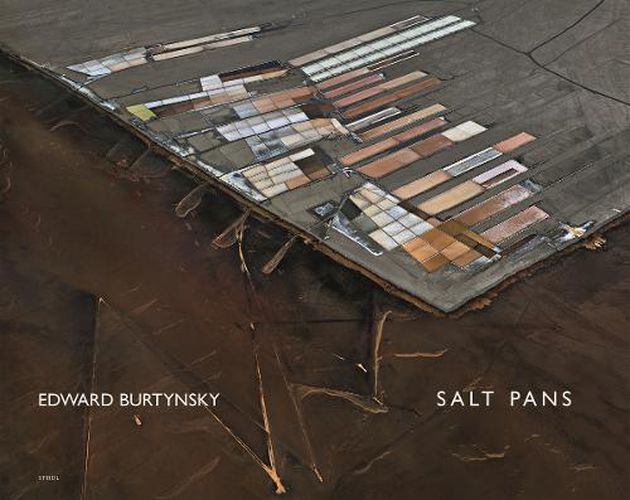Readings Newsletter
Become a Readings Member to make your shopping experience even easier.
Sign in or sign up for free!
You’re not far away from qualifying for FREE standard shipping within Australia
You’ve qualified for FREE standard shipping within Australia
The cart is loading…






Salt Pans is Edward Burtynsky’s newest book in his acclaimed ongoing series of photographs exploring different industrialized landscapes across the world. Consisting of 31 aerial photos of the salt pans in the Little Rann of Kutch, the project is the result of months of intricate negotiations and preparations. These striking geometric images, taken in an intense ten-day period during which Burtynsky photographed from a helicopter, present the pans, wells and vehicle tracks as abstract, painterly patterns: subtly colored rectangles crossed by grids of gestural lines.
And yet the reality behind the ironic beauty of Burtynsky’s pictures is a harsh one. Each year 100,000 poorly paid Agariya workers toil in the pans, extracting over a million tons of salt from the floodwaters of the nearby Arabian Sea. Furthermore, receding groundwater levels, combined with debt, diminishing market values as well as a lack of governmental support, threaten the future of this 400-year-old tradition and the lives dependent on it.
The images in this book are not about the battles being fought on the ground. Rather, they examine this ancient method of providing one of the most basic elements of our diet; as primitive industry and as abstract two-dimensional human marks upon the landscape. Edward Burtynsky
$9.00 standard shipping within Australia
FREE standard shipping within Australia for orders over $100.00
Express & International shipping calculated at checkout
Salt Pans is Edward Burtynsky’s newest book in his acclaimed ongoing series of photographs exploring different industrialized landscapes across the world. Consisting of 31 aerial photos of the salt pans in the Little Rann of Kutch, the project is the result of months of intricate negotiations and preparations. These striking geometric images, taken in an intense ten-day period during which Burtynsky photographed from a helicopter, present the pans, wells and vehicle tracks as abstract, painterly patterns: subtly colored rectangles crossed by grids of gestural lines.
And yet the reality behind the ironic beauty of Burtynsky’s pictures is a harsh one. Each year 100,000 poorly paid Agariya workers toil in the pans, extracting over a million tons of salt from the floodwaters of the nearby Arabian Sea. Furthermore, receding groundwater levels, combined with debt, diminishing market values as well as a lack of governmental support, threaten the future of this 400-year-old tradition and the lives dependent on it.
The images in this book are not about the battles being fought on the ground. Rather, they examine this ancient method of providing one of the most basic elements of our diet; as primitive industry and as abstract two-dimensional human marks upon the landscape. Edward Burtynsky